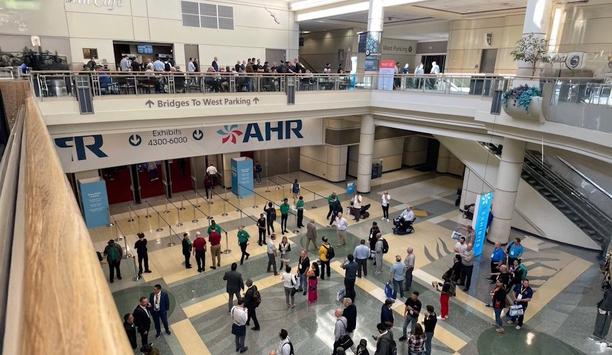The ongoing shortage of HVAC equipment and tools has created a significant challenge for contractors around the country. At the same time, companies are also up against intense environmental conditions, like the extreme winter weather that impacted much of Texas in early 2021.
The right strategies can help HVAC businesses navigate this shortage and make the most of the equipment they can order. Due to the lingering effects of the COVID-19 pandemic, raw material and component shortages have disrupted several critical links in the HVAC manufacturing supply chain.
Various raw materials
The most significant have been shortages of various raw materials, including aluminum, copper and plastic, and a notable lack of semiconductors. The semiconductor shortage has had a particularly broad impact on industries of all types. Right now, any industry that uses power electronics — from automakers to graphic cards manufacturers — is struggling to source enough chips to meet demand.
The semiconductor shortage has had a particularly broad impact on industries of all types
Many economists and industry observers are unwilling to make predictions about when the shortage will end. However, some have estimated that it could be as late as 2023 before semiconductor production returns to normal. Industries that produce raw materials needed for essential HVAC equipment may face similar recovery timelines.
Salvaging working parts
Consumer confidence is growing, and demand is returning to more normal levels as the pandemic begins to end.
These market conditions could mean a quicker return to business as usual for these essential industries — but HVAC professionals should probably prepare for shortages that last well beyond 2021. There are a few strategies individual companies and contractors can use to outmaneuver these shortages.
Temporary replacement components
Loaner A/C units and temporary replacement components can bridge the gap when repairs are necessary
Offer loaners and temporary repairs - Loaner A/C units and temporary replacement components can bridge the gap when repairs are necessary but customers aren’t interested in waiting for a new part. You may be able to offer loaner components or window units that can help keep customers cool.
Salvaging working parts from systems your business replaces can give you a stockpile of functional, used items you can use for temporary repairs. These fixes will not last as long as a new part or complete HVAC system replacement. Still, they can provide a valuable stopgap when options are limited or customers aren't interested in more extensive work.
Preparing reverse logistics
Communicate with suppliers - Some manufacturers reduced component stockpiles to a minimum before the pandemic and have few spare components as a result. Others continued to buy items and may have parts on hand for contractors who need replacement components immediately. Communicating with your suppliers will let you know if rush orders are a possibility. In some cases, you may not have to worry about long lead times for every part, but only for specific components or products.
Communication will also help you better prepare your reverse logistics
Many HVAC businesses are also building stockpiles of their own, ordering parts and components well in advance to cover anticipated needs. Knowing which components or products are likely to require long lead times will help you inform your customers and get ready for repairs more effectively. Communication will also help you better prepare your reverse logistics — the processes you use to return unneeded or unwanted parts to suppliers.
Good working practices
Prioritize safe and sustainable work - Now is the time to make safety even more of a priority than usual. HVAC businesses can struggle in good times if a key employee is injured on the job. Independent contractors likely can’t afford the missed work that an injury may mean.
The correct PPE and good working practices will help keep workers safe and encourage them to stay, making it easier for companies to avoid the HVAC skills gap. Safety will be especially important on hazardous job sites, like active construction or demolition areas. Following safety best practices for those locations will help keep you and your team safe.
Cleaning condenser coils
Teaching people how to safely clean their AC unit could provide similar benefits
Let customers know how they can help - Communication with regular customers can also be key. It’s not unusual for someone to wait until their air conditioner has stopped working to schedule maintenance. As a result, issues with HVAC system components will typically not be noticed until they have failed or started to cause problems. It also means customers will miss out on maintenance that could reduce the strain on an HVAC system — like changing filters and cleaning condenser coils.
Teaching people how to safely clean their AC unit could provide similar benefits. Encouraging regular maintenance and offering deals on services can keep their systems running for as long as possible without repairing or replacing components. Proactively informing customers about the long lead times needed for new or replacement parts may help you communicate why this upkeep is so important right now.
Navigating the shortage
Enable customers to upgrade their repairs - Other strategies that encourage customers to invest in replacements rather than repairs can help offset the higher costs of HVAC equipment. Second chance offers and similar deals allow customers to credit the cost of a repair against a replacement unit. These offers mean that even if customers choose to repair rather than replace a system, they can change their minds without losing the money spent on the initial fix.
HVAC contractors should be willing to pass along these increases to customers
Be willing to shift - Prices for HVAC equipment are likely to remain high during the shortage, and business costs will be higher as a result. HVAC contractors should be willing to pass along these increases to customers. Building in higher expenses for components and essential resources to your pricing will help you navigate the shortage.
HVAC equipment shortage
Anticipate related equipment and parts shortages - Your business should also be preparing for related problems — like the ongoing shortages of vinyl car wraps or replacement auto parts. Fleet vehicles that need repairs may be out for days or weeks at a time. Maximizing the lifespan of all business equipment with preventive maintenance will help keep the business running in the long term.
The HVAC equipment shortage is likely to last well into the future — potentially as late as 2023. Businesses and contractors should prepare for rising costs and long lead times for new components and systems. To adapt to these new market conditions, companies may want to readjust their pricing schedules and change how they communicate with customers and suppliers. Proactive communication that prioritizes transparency will help businesses make the most of supplier relationships and let clients know what they should expect.


















